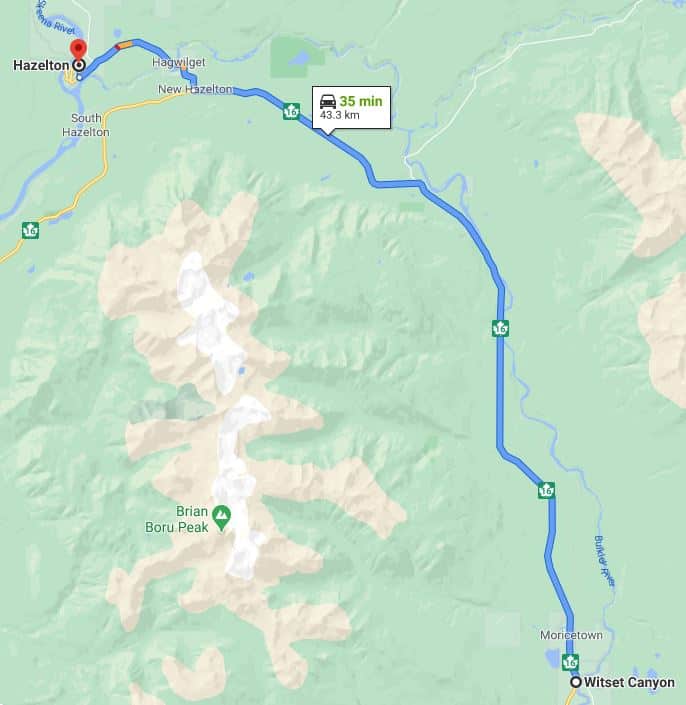


June 27, 2020
Witset (formerly Moricetown) Canyon lies on the Buckley River on Canada Route 16 between Smithers and New Hazelton.

It is one of the most magnificent choke points on the Bulkley River.

The local First Nations come to this place to fish salmon using long poles.

The Spring (King) salmon runs are at their peak from late June to mid-July.

The Hagwilget Bridge is a single-lane steel suspension bridge located along Highway 62, between the Village of Hazelton and the District of New Hazelton.

When it opened in 1932, the present-day steel and cable bridge was the highest suspension bridge in Canada.

Early images of the aboriginal bridges reveal a cantilever bridge with a central suspended span built with wood and rope, and later with wood and telegraph wire.

The 1912 version was a suspension bridge of wood and wrought iron.

The red dresses represent Canada's missing and murdered indigenous women. They are visual reminders of the women who are no longer present.

'Ksan is a replica village of traditional longhouses and First Nations lifestyle and art.

This is the workplace for Gitxan Artist Daniel Yunkws. He combines his Gitxsan and Celtic Heritage to create art that sets him apart from his peers.

Here, the Skeena and Bulkley rivers meet.

From the village, there is a short trail that goes to the Skeena River. Here you can see the confluence of the Skeena and Bulkley rivers.

This walk is hell for hay fever sufferers and a paradise for wildflower lovers.

Bumblebees don't produce much honey but are very good pollinators. Without them, food wouldn't grow.

In earlier days, Hazelton was the home of at least twenty-two "firsts" for the area between Prince George and Prince Rupert.

Amongst these "first" were the first bank, first hospital, first telegraph office, bank, mining office, hospital, and the newspaper.

In Polly Sargent Park, you can enjoy a stroll along the Skeena River and explore some artifacts from Hazelton's steamboat days.

In the late 1800s, the Gitanmaax Frog Clan carved the Gitemkaldo's 'Nose Like Coho' Totem. There are many figures, the one in the picture is a row of three small children.

Here lived the most famous fugitive in British Columbia. In 1902, Simon Gunanoot and his brother-in-law had charges of murdering two men after a beer hall argument.

In 1914, Simon surrendered and later acquitted of all charges.

